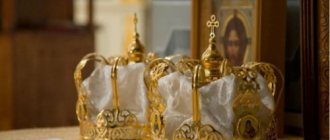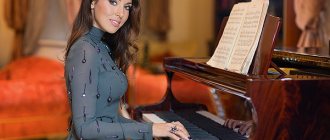If the Orthodox have their main feast on Easter, and traditional sweet dishes are dedicated to this holiday, then in Catholic and Protestant countries all kinds of sweets are made primarily for Christmas. Long before a hearty Christmas dinner or lunch and for some time after it, fancy-shaped confectionery products appear on festively set tables, each of which has its own, sometimes surprising, story.
There are always stellar baked goods on Christmas tables. Unlike the “Kremlin” star, which we used to decorate New Year trees (instead of the popular angels before the revolution), here the shape, of course, refers to the Star of Bethlehem. And since “in fact” that star was a comet, in the Western tradition these products are baked like that – “with a tail.” However, a simple form is also found: German macaroons “cinnamon stars” (“zimtsterne”) even without any tail create a joyful festive mood. Stellar pastries are not uncommon in the Romanesque zone of Europe - here, first of all, Northern Italian Verona comes to mind, where "pandoro", a ribbed cake made from airy yeast dough, must be cut horizontally - so that not only the entire product, but also each piece retains the eight-pointed " star" shape.
Other sweet attributes of Christmas are associated with the mystical symbolism of numbers. Particularly popular are 12 (the number of Christ's apostles) and 13 (the apostles plus Jesus himself). In Provence, in the south of France, after the midnight Christmas mass, exactly thirteen types of dessert are still served: hazelnuts or walnuts, raisins, dried figs, almonds (this “four” symbolizes the four righteous mendicant orders: Augustinians, Dominicans, Franciscans and Carmelites) , diamond-shaped “calisson” marzipans from the city of Aix with candied melon, white and black nougat, quince marmalade “pat”, winter melon, light grapes, tangerines, an ancient sweet cake “pompou” with olive oil, as well as dates stuffed with green and red marzipan. By the way, dark green and bright red are also not random, but very significant colors: they personify eternal life and the sparkling sun.
Another feature of the Western European Christmas celebration is that preparations for it begin long before the end of December. In the old days, in the weeks before Christmas, Catholics observed a strict fast, but over time, relaxations were made, and after the Second Vatican Council (1962–1965), during which, in particular, services were introduced in national languages, the Nativity fast finally “fell out of use.” " Only its name has been preserved - Advent (“advent”, that is, the Coming of the Savior). This is still the name for the pre-holiday period, which begins four Sundays before Christmas. Its indispensable attribute, especially in Northern Europe, is a wreath with 4 candles: on the fourth Sunday before the holiday, one candle is lit on it, on the third, two, and so on, and by December 25, all four candles are already burning on the wreath. In addition, this period includes several saints' days, and very revered ones. And while children play with sweet Advent calendars (a cardboard with windows for each day remaining until Christmas, representing a “stash” with candy, cookies, etc.), adults prepare traditional treats for each of these holidays. This is how a wonderful Christmas mood gradually arises...
Christmas post: what you can eat
How to spend the Nativity Fast? This fast is not as strict as the Great and Dormition fasts, but in severity it approaches Peter’s fast. On certain days of fasting, you can eat fish, dishes with vegetable oil, and on weekends and holidays you can even drink a little wine. At the same time, it is strictly forbidden to consume products of animal origin: eggs, milk, meat, cheese, butter and, accordingly, all derivatives from them. On some days, the diet consists only of uncooked food of plant origin - this is called dry eating. These days you can eat vegetables, legumes, mushrooms and cereals.
On the evening of January 6, when the first star appears in the sky, Orthodox Christians sit down at the table - this is a notification of the birth of Jesus Christ. 12 Lenten dishes are served at the table, the first of which is usually kutya. Kutia is a lean porridge made from wheat, rice or pearl barley, boiled in water, flavored with honey, raisins, nuts, poppy seeds, dried fruits or candied fruits.
Kutya / Photo: IMelnyk / depositphotos.com
The Christmas period is divided into 2 periods
:
• November 28 – December 9
On Monday, Wednesday and Friday - dry food. On Tuesday and Thursday - hot food with vegetable oil. Is wine allowed during the Nativity Fast? On weekends (Saturday, Sunday), fish and wine are allowed. This also applies to such major holidays as the Entry into the Temple of the Blessed Virgin Mary (December 4), St. Andrew the First-Called (December 13), and St. Nicholas the Wonderworker (December 19).
• December 20 – January 5
Pre-Christmas days on which fish and wine should not be consumed.
• 6th January
- one of the strictest days in Lent is Christmas Eve. During the day, believers do not allow themselves even a crumb of food. After the first star rises, Christians can sit down at the table and eat 12 traditional dishes that are prepared for the Holy Evening.
Christmas Eve / Photo: SergKovbasyuk / depositphotos.com
We adapt to the children's schedule
Natalya Yaltanskaya, mother of nine children
We always have a very busy end of the year and we make all our plans based on the children's plans. The children have two schools – secular general education and Orthodox for the younger ones.
In the Orthodox - they are preparing for Christmas, in the secular - the half-year is ending, tests, concerts.
There is also a choir, with classes scheduled for the end of December and beginning of January - almost every day. Plus concerts, plus children singing at services. After Christmas - at the Christmas tree and on January 12, everything ends with participation in the service in the Assumption Cathedral of the Kremlin.
We have to bring the children, take them.
I have a session after January 11: I am studying at the Teacher Development Course. So I need to prepare for exams too.
So we take the schedule for one day for each (one child has a rehearsal, another has a concert, the rest have something else), and try to plan exactly that day.
What is definitely planned in advance is the purchase of a Christmas tree on December 31
I, simply because after the New Year you can’t buy it anymore. The year before last we went to the forestry, last year a friend called and said that in Moscow they were giving out free Christmas trees to large families at the Christmas tree market.
Another thing we should definitely do is go to the theater during Christmas time. This year the children will go to the Bolshoi Theater (we bought tickets in advance - three months in advance).
From 1 to 6 January
We try to restore order as much as possible. Like anyone, when we can: the students are in session, you can’t really involve them either.
So it would be nice if everything could be planned in advance, but it doesn’t work out. So, we will have time and - thank God!
Children's clothes for performances are always ready for combat - we know that they can be called to perform at any moment, so here again - no special preparation.
We prepare the festive table on Christmas Eve, between services. It’s not difficult - there are a lot of us, and the day before we decide who will do what. Usually there are always volunteers - some take on the salad, others do something else. Usually all this takes an hour or two.
Miraculously, the churched Father Frost from the New Rusalim Monastery appeared in our home and said: “All children (from 26 to 4 years old) write letters with wishes.” We wrote it, now we wait to see what happens.
For every holiday, the children prepare a concert, but when they do it, I don’t know: it’s their personal initiative.
Getting ready for Christmas and learning to cook!..
At the Journey to Christmas festival, which starts in the capital on December 14, everyone will be able to find something to their liking: more than 8,000 free master classes will be held for guests! Visitors will be offered to learn how to cook a wide variety of holiday dishes, make New Year's gifts for friends and family, master carpentry and ancient crafts, watch filmstrips and listen to lectures on history, culture, and the rules of good manners. The classes will be held in warm festival chalets and anyone can join them: no pre-registration is required.
Preparing a holiday
As always, at the festivals of the “Moscow Seasons” cycle, guests of “Journey to Christmas” will be treated to many culinary master classes! The program of classes includes festive dishes from different Russian regions and foreign countries, ancient and modern recipes, treats “from fairy tales” and sweet gifts!
For example, on Revolution Square they came up with a new format for a New Year's boutique - Metropol Grand Cafe, where children can make Christmas tree brownies, bake spicy Christmas cupcakes and brew aromatic hot cocoa. And next door, at a local culinary school called “Gastronomy. Around the World" experienced teachers will introduce children to recipes for holiday dishes from different countries: Viennese schnitzel, Austrian fish salad, Czech strudel, English ginger cookies, Japanese mochi sweets.
On Tverskaya Square at the “Christmas Kitchen” there will be daily theatrical culinary master classes: we will read fragments of literary works from different countries and cook the dishes described in them! On Stroginsky Boulevard, guests will be taught how to cook “fairytale dishes”: Freken Bock buns, “rejuvenating apples” in caramel and much more.
The “Big Pantry” on Sirenevy Boulevard in Troitsk and the “Cook School” on Slavy Square (in Kuzminki) invite young chefs to get acquainted with the traditional dishes of the Russian New Year’s table! We will learn the secrets of preparing everyone's favorite Olivier and herring under a fur coat salads, and bake pies and honey gingerbreads.
During the master classes organized as part of the Journey to Christmas festival at the Semenovskaya Fair, we will remember ancient recipes (for example, we will bake a chicken pie according to Ivan the Terrible’s favorite recipe and cook hodgepodge from the “Handmade Book of the Russian Experienced Housewife” by Ekaterina Avdeeva, published in 1842). We will also prepare the most delicious dishes according to traditional recipes from Russian regions (Siberian dumplings, Murmansk cod, duck, according to a recipe from the Vladimir region...).
You can also get acquainted with the culinary masterpieces of Russian regions on Youth Square in Zelenograd: there, experienced chefs will teach little visitors how to cook Novgorod-style potato zrazy, Tatar-style brushwood, Sverdlovsk puff pastry and St. Petersburg crumpets.
Well, in Klimentovsky Lane there will be a children's culinary school "TipTop", where young visitors will be taught how to sculpt Christmas tree decorations from sugar mastic, prepare festive tiramisu with caramelized chocolate, coconut candies in white chocolate and many other original desserts and hearty dishes!
Making gifts and learning new creative hobbies
We welcome young tinkerers at classes at the “Gift Factory” on Yartsevskaya Street and in the “Land of Toys” on Rozhdestvenka Street. Experienced teachers will show you how to create New Year and Christmas gifts for loved ones. You can make a box based on fairy tales for your beloved grandmother, designer jewelry for your mother, and pop-up cards for your friends. And the ability to create beautiful holiday packaging will definitely be useful to everyone and always!
In the “Creative Studio” on Tverskoy Boulevard (near the monument to Timiryazev), children will create a magical snow-covered ball - a snowball, cut out a Christmas town using the kirigami technique, and also decorate New Year's toys. And nearby, on the site near the monument to S. Yesenin, young designers will assemble a device for showing cartoons, a lamp, a clock and even a moving mini-robot!
In the “Carpentry Workshop” on Glory Square, festival guests will not only be taught the basics of carpentry, but will also be shown how to make figurines of fairy-tale characters, a shelf in the shape of a New Year’s tree, or Christmas tree decorations from simple wooden blocks.
On Kuznetsky Most Street, in the Fairytale Space chalet, children will be told the history of carnivals and invited to come up with the design of masquerade masks, make rag dolls and create fashionable images for toys. And from December 18 to 21, the “School of Good Manners” will open here, where visitors will learn how New Year and Christmas were celebrated in the 19th century, what dishes were served, and how the Christmas tree was decorated. Everyone will be able to get acquainted with the basic rules of etiquette - ancient and modern.
A Children's Theater School of Foreign Languages will operate on Novy Arbat for young visitors. Experienced teachers will conduct classes in a playful way! Together with their teachers, children will read Christmas-themed fairy tales and take part in play and puppet shows based on these works. And adults will be invited to take part in creative activities to create original decorative items.
Well, at the “School of Arts” on Revolution Square, visitors will learn to paint with watercolors and acrylics, make New Year’s cards in patchwork style and decorate Christmas tree balls!
Studying the history of winter holidays
At the Journey to Christmas venues, guests will be able to celebrate the winter holidays in the spirit of different eras of the past. And at the same time learn new skills!
Thanks to the unusual decorations, guests of the festival site on Gorodetskaya Street will be able to be transported... to the Middle Ages! You will have to prepare for the upcoming holidays together with the inhabitants of the medieval castle (for example, make Christmas wreaths from spruce branches and Christmas tree decorations from straw and bast), and at the same time defend the fortress from the “warriors of winter” (fencing master classes will come in handy here) . Here you can also listen to lectures on the history, culture and life of the inhabitants of the Middle Ages.
The site on Orekhovoy Boulevard will turn into a retrospective of Christmas in the 19th century. Here, re-enactors will demonstrate all stages of preparation for the ball (from choosing outfits to dance rehearsals), teach guests how to perform romances and invite them to take part in home performances.
It will be possible to celebrate the winter holidays in the spirit of the second half of the 19th and early 20th centuries at two festival sites at once! On Manezhnaya Square, guests will be able to visit a Victorian fashion salon and a retro barber shop, watch spectacular scientific experiments, and learn what the electric musical instrument theremin sounds like. On Profsoyuznaya Street, in the “Intellectual Living Room”, visitors will be invited to paint pictures with patterns in the oriental style, and in the “Village Hut” chalet, they will be able to make carol masks and retro cards and get acquainted with the process of producing homespun cloth.
On Dmitry Donskoy Boulevard we will be transported to the atmosphere of Soviet holidays of the 1960s. The House of Culture pavilion will host wood burning master classes and filmstrips. And in the Science and Radio Engineering pavilion there will be a design and aircraft modeling club. Experienced craftsmen will teach you how to create aircraft from cardboard and paper!
Schedules for the Journey to Christmas festival sites are presented on the website at the link provided.
The original publication is on the online media website | If you are reading it elsewhere, it may have been stolen.
What should you remember during the Nativity fast?
The main thing is not to “eat” your family, friends and acquaintances during fasting. Be pure in soul and thoughts. Don't quarrel with anyone, be kind and merciful. Try to forgive past insults, do not use foul language, forget about irritation, anger and malice. Don't get irritated over trifles.
And remember God all the time. After all, when we swear and scream, we thereby break the “bridge” that we gradually built on the path to God. Your main goal is to prepare your soul and body for the great holiday.
How to keep the Nativity Fast, Glavred.info
Christmas is a day full of joy and happiness because Jesus Christ was born. And do not forget about the Virgin Mary, who gave it to the world, remember in prayers for her. The whole world should rejoice and rejoice on this day. Fast spiritually as well, so that you become spiritually pure by Christmas.
Those laity who want to better understand the essence of this fast need to read the troparion and kontakion. That's what they are called - for the holiday of the Nativity of Christ. Try to attend church at least every Sunday, attend services, and pray with other Orthodox Christians. Ask the Lord God for forgiveness of forgotten sins.
Confession and the sacrament of communion are very important. During Lent we should also be generous and kind. Give alms to the poor, repent, so that with a pure soul and thoughts you can come to Jesus Christ at Christmas.
Welcome the appearance of the son of God with reverence! Go through fasting and bring to it your pure mind, kind open heart and soul full of love for God. Eat healthy, follow church teachings.
Conscious self-restraint in food should lead you to the Savior. Advance in your spiritual activities. Be free from the hustle and bustle. Grow and become closer to Jesus Christ step by step. Let nothing harm your soul!
Let's celebrate Christmas with dignity: when does Lent begin and end?
If you want to prepare for a gracious union with the Savior, the Nativity Fast will need to be observed from the end of autumn and the beginning of winter. The laity fasts for 40 days: from November 28 to January 7.
As you can see, this fast is akin to the Great Lent, because it also lasts 40 days. That is why in the Church Charter it is usually called the Pentecost. True, it is not as strict as on the eve of Easter. After all, Orthodox Christians are allowed to eat fish and seafood.
There are small exceptions, of course. But we will talk about them a little later. In the meantime, let's talk about why this post is also called Filippovsky. The thing is that the last day before Lent, when you are allowed to have whatever your heart desires on the menu, is called a conspiracy. It falls on November 27 - this is the day of remembrance of the Apostle Philip.
That is why people call this day “Fillipovka” or “Filippka”. The laity eats whatever their heart desires on this day. But the next day, from November 28th, they begin to fast.
Popular articles now
Weather for tomorrow: Ukrainians were warned about contrasts - some will feel summer warmth, while others will be flooded with autumn-like rains
Tina Karol pulled off her panties and named the date that all Ukrainians are waiting for
The plump Koshevoy publicly pulled on the “red-haired” one, it almost cracked
Triplets born with cerebral palsy, courageous mother spat in doctors' faces: “They will grow up to be fools”
show more









